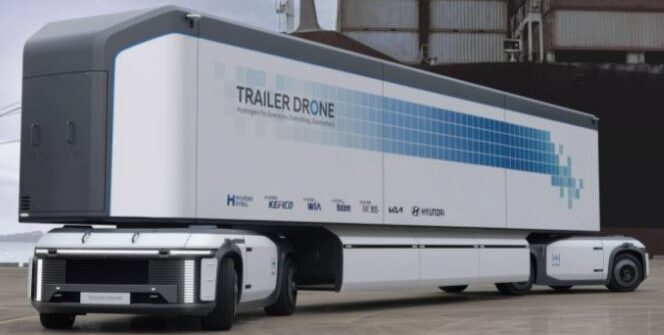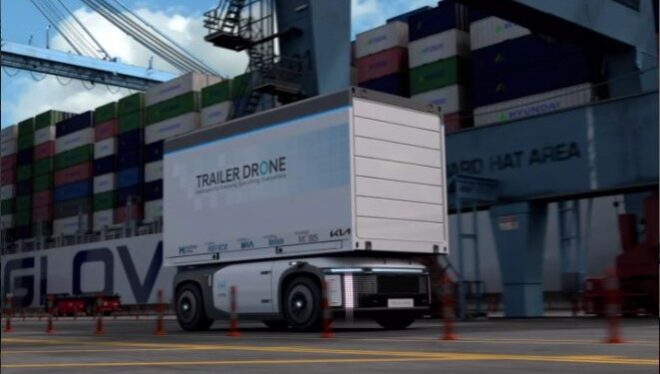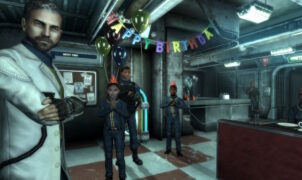TECH NEWS – Hyundai‘s autonomous e-Bogie concept is a hydrogen-cell, zero-emission robot that could transform how freight is transported on land. Truck drivers may be starting to worry.
Of the hydrogen-powered concepts presented at the Hyundai Motor Group’s Hydrogen Wave forum this week, the Trailer Drone concept and the modular fuel-cell e-Bogie concept based on it are perhaps the most radical. Together, these vehicles represent the idea that zero-emission hydrogen fuel cells and autonomous driving technology are changing the way we think about trucking and logistics – and it all starts right from the moment we leave the truck behind for the most part.
The e-Bogie gets its name and inspiration from bogies, the two-axle subframes sitting at either end of a rail car. More of a ‘transport robot’ than a truck, the e-Bogie is essentially an autonomous electric chassis powered by a hydrogen fuel cell. Thanks to its four-wheel-independent steering, the e-Bogie can have impressive manoeuvres such as turning in place and diagonal “crab-walking”, thanks to its four-wheel-independent steering. The robust, low-profile design allows you to transport a small container or other cargo.
Things get interesting when several e-Bogies work together in Cluster mode. Put a pair of e-Bogies on a full-size semi-trailer, one on each end, and you have what Hyundai calls a Trailer Drone – an autonomous trailer (convoy even) that can drive itself around shipyards, highways, and even city centres. Thanks to dual, independent steering mounted at either end, Hyundai envisions the large trailers navigating tight corners and small roundabouts with ease but professionalism.
Mechanically, any e-Bogie can be the front or rear of the Trailer Drone. Still, the trailer itself houses some sensors that aid autonomous driving on the highway, with front and rear panels to aid high-speed aerodynamics. In addition, Hyundai envisions that these drones will travel in sections on the road, closely grouped for even better aerodynamics and long-term efficiency. Hyundai estimates that these vehicles will travel more than 621 miles (1000 km) per H2 charge. Upon arrival, the trailer can unload itself autonomously, lifting itself up on its fold-out legs and letting the e-Bogies underneath pull away. It can be split into up to three smaller containers, each of which can be transported to its destination by an independent e-Bogie.
The e-Bogie vehicle platform can also be helpful outside of transport and logistics. Hyundai has also unveiled the Rescue Drone concept, equipping a single fuel-cell e-Bogie with rescue service equipment. The idea could be deployed autonomously in hazardous firefighting or disaster relief situations or operated remotely by emergency service personnel monitoring video from an aerial drone uploaded and stored on the Rescue Drone platform. According to Hyundai, there would even be space for an internal compartment between the drone’s wheels, where additional equipment or stretchers for evacuating the injured could be stored.
It is not immediately clear how close these vehicles are to production. These fuel-cell-based e-Bogie concepts are just one example of Hyundai Motor Group’s Vision 2040 objective to promote hydrogen as the future renewable fuel, which the South Korean company’s home government is particularly keen to support. This week, as part of the Hydrogen Wave forum, Hyundai also unveiled a pair of hydrogen-powered heavy-duty trucks and the Vision F.K. concept, as well as a fuel-cell plug-in hybrid sports car.
Source: Cnet

















Leave a Reply